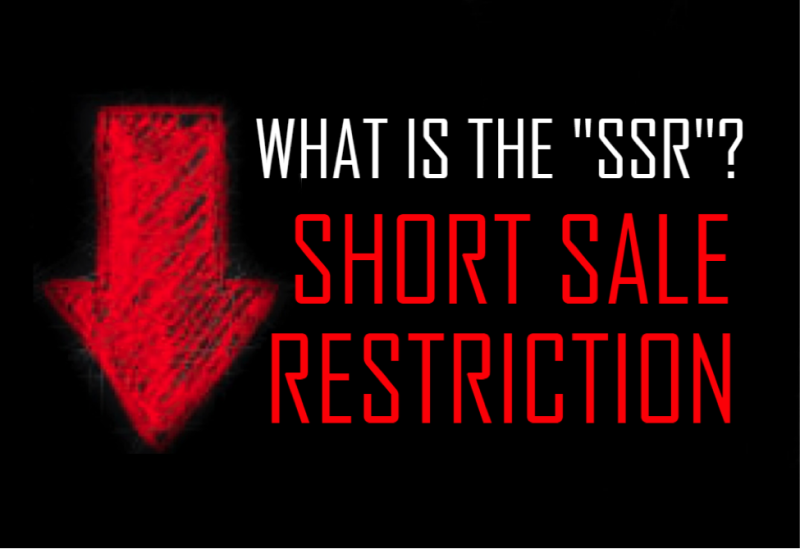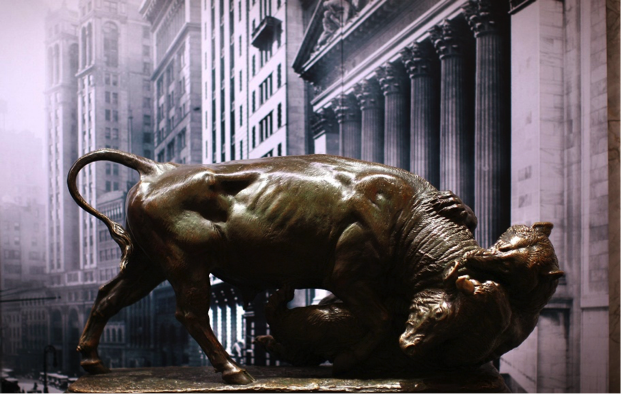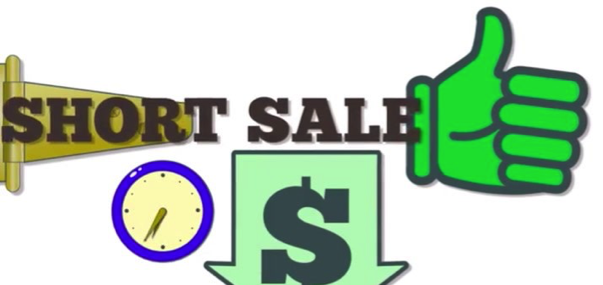The short sale restriction is a process that is geared towards the limit of short selling in the stock market.

Most traders prefer to use the abbreviation SSR but it can also be referred to as UPTICK RULE. This rule has a major objective of stopping traders who sell short from bringing down the company’s shares.
Short sale restriction was known to be a regulation in trading; the regulation was placed between the years 1938 and 2007. It restricted traders from short-selling stocks on a downtick in the market price of shares.
It was said that between the years 1938 and 2007, traders and market participants were not able to sell short on a stock even when the shares were falling.
However, the ban was lifted by the Securities and Exchange Commission (SEC) in 2007. Hence, short selling was now approved and permitted on any movement of price.
Also, the SEC embraced the alternative uptick rule in the year 2010. This rule now prohibits traders and short sellers from short selling when the stock drops 10% and more.
Also Read: What is Short Selling: Profit Making Strategy?
Contents
- Understanding Short Selling Rule with the Securities Exchange Commission
- History of the Short Sale Restrictions Rule
- How Does Short Sale Rule Work?
- The Basic Rules of Short Sale Restrictions in Stocks
- Alternative Uptick Rule
- Is Short Selling Rule Effective?
- Final Thoughts
- FAQs
Understanding Short Selling Rule with the Securities Exchange Commission
The location of the shorts trade is known to be over the recent trade which is the uptick in the price of shares.

On the downtick of a share price, the short sale rule prohibited money trading stocks in the new york stock exchange and selling shorts but exceptions were made for expectations with limits. This rule can be called the uptick rule, tick-test rule, and tick rule.
The SEC was given the authority to control the sales of securities on a short level, this authorization was sponsored by the Securities Exchange Act of 1934.
Also, the exchange commission prohibited short sales in the down market in the year 1938. This was to restrict short selling.
By the year 2007, the restriction was lifted and short sales were permitted to take place whether in the up or down market.
When the cost of security is reduced by 10% or even more, maybe different from the previous day’s close, the alternative uptick rule is triggered. This alternative uptick rule was adopted by the SEC in the year 2010.
Short selling is approved when the price of stocks is above the current best offer; this happens when the rule is effective.
The best part of this rule is that it applies to every stock and security. It also stays effective throughout the day and even the trading session to come.
History of the Short Sale Restrictions Rule
During the Great Depression, the SEC adopted the short-sale to reply to the practice of shareholders pooling capital and short-selling their shares. This was in the hope of making other stakeholders panic or short sell.

Those stakeholders who made up the pool would end up buying more stocks at a very reduced cost. But these shareholders would achieve their aim by moving the value of stocks farther below in the short run. They also do this by influencing the fortune of other stakeholders.
The Securities Exchange Commission embarked on a journey to go over the probability of eradicating the short-selling rule after decimalizing the major security exchanges back in the early years of the 2000s.
The stock market of the U.S got good stability due to the changes that were compressing from the results of fractions. During the time, the SEC realized that the restriction on a short sale was not necessary anymore.
Also, SEC has a program conducted for the sake of stocks within the years 2003 and 2004. It was to see if taking away the short-sale rule would affect the market negatively.
The SEC reviewed the said results in 2007 and concluded that taking away the short-selling limitations would have no negative impact on the market via liquidity or quality.
How Does Short Sale Rule Work?
If the circuit breaks down, short sales can only be completed at an amount above the current best offer. Short sales orders can't hit a price for stocks under SSR.
So it'll be necessary to wait for the price to rise from the asking price for your order to be executed.
Let’s follow this example. The hypothetical stock dropped 87 cents a share from its closing price of $1.10 on Tuesday.
You waited to hear that big crack. You have been observing Short Stocking DVDs. You can be sure when they break over 90 cents that this stock is gone. You made the trading strategy.
If the best offer is 85 cents, you can't short at 85 cents, according to the short-sale rule. You must place a short-sale order at a greater price than the bid.
For the order to be fulfilled, an offer for the (higher) requested price must be received. As a result, the uptick rule still applies. It's equivalent to the previous SSR in that regard.
The Basic Rules of Short Sale Restrictions in Stocks
Since it has been established that the SSR was designed to limit short sales and prevent them from going below the initial cost of a stock.
It is important to know that once a stock has gone below the normal 10 percent per day and it is in comparison with the price of the previous day, short selling comes to pay.
Now some rules govern the SSR. The four basic rules will be explained below:
- The first says that SSR is triggered when the shares of a company reduce by 10% in a day. The 10% in question starts counting from the day before.
- The second says that the SSR prohibition sticks for the rest of the day and in similar situations, the said rule can be extended to the next day.
- The third rule says that the SSR applies to companies listed on the American Exchanges. Some of the exchanges include the Nasdaq and the New York Exchange (NYSE).
- The fourth rule is executed by the brokers. Brokers will see when the SSR is triggered at DTTW.
Alternative Uptick Rule
“The rule is aimed at preserving trader trust and enhancing efficient market hypothesis,” according to the SEC press release, “identifying that short selling can ultimately have a helpful and a detrimental influence on the market.”

It is crucial to know that the 2010 rule is a bit different from that of 1938. The difference is evident in such a way that there is a circuit breaker that is set to trigger the rule with a limited time.
When a security's price falls by 10% or more from the previous trading session's closing price, the SEC's short-sale rule 201 kicks in.
For example, if a stock closes at $1.00 on Monday and subsequently falls 10% to $.90 on Tuesday, the circuit breaker is tripped, and Rule 201 kicks in. In the case above, the SSR is in force for the remainder of Tuesday's session and all of Wednesday.
Is Short Selling Rule Effective?
This question is open for debate as it cannot be easily decided if the SSR is effective or if it does its job. There seems to be research that shows varying degrees of effectiveness for the SSR.

Especially for stocks with varying prices and share prices. The SSR is something you have to contend with as a trader, whether it does what the SEC intended.
Our thoughts on this are that the Short Selling Rule is that which you have almost no control over. Knowledge, lessons, and education are things that can be controlled.
What traders and investors can do is get the necessary information and experience needed to know exactly when to sell short.
You can also learn to direct the uptick rule and make it effective for the stock you want to invest in. The effort and experience required for this sales restriction have to be gotten.
It is important to note also, that there is no easy way out of this. A lot of effort needs to be invested in this if you wish to get it right.
Also Read: How To Short Crypto
Final Thoughts
Shorting a trade is a fantastic strategy to profit. Several trading specialists have specialized in stock shorting.
In contrast to buying, however, in what is known as a short squeeze, the possibility of making an endless loss exists.
This is because the most loss you may incur when you buy is zero. When you short a stock, on the other hand, there is no limit to how far the stock can go.
FAQs
What is a short sale restriction?
Short selling restrictions is a law introduced in 2010, sometimes called the alternative uptick rule that allows a company to short a stock only when the uptick has reached a higher price.
This program has helped minimize flash crashes and huge drops by allowing the stock to lose over 10% compared to the previous day.
Is a short sale restriction good?
The question of whether an SSR is beneficial or harmful is frequently asked. We have found it to be a relatively excellent feature for traders in our experience.
It's a good one since it prevents traders from causing a stock to drop suddenly.
It also discourages many inexperienced traders from arbitrarily shorting a declining stock without conducting any investigation.
The good news is that if you do your homework, you can always locate other companies that will see a similar dip.
The restriction is intended to prevent short sales from lowering the stock prices and continues until the next day and the next.
Accordingly, the restrictions aimed at improving stability and protecting investors from bear raids.
How long is a short sale restriction?
It prohibits short selling for stocks that fall in price by more than 10 percentage points. Once activated, the SSR is valid for at least three days before trading.
It applies to any shares that are traded at the exchanges, online or by phone.
Why short selling is not allowed?
Some countries are considering banning short selling. Some believe short selling causes a spiral of selling and will hurt stocks and damage economic growth.
Some companies use short sales prohibitions for stock market purposes.
















